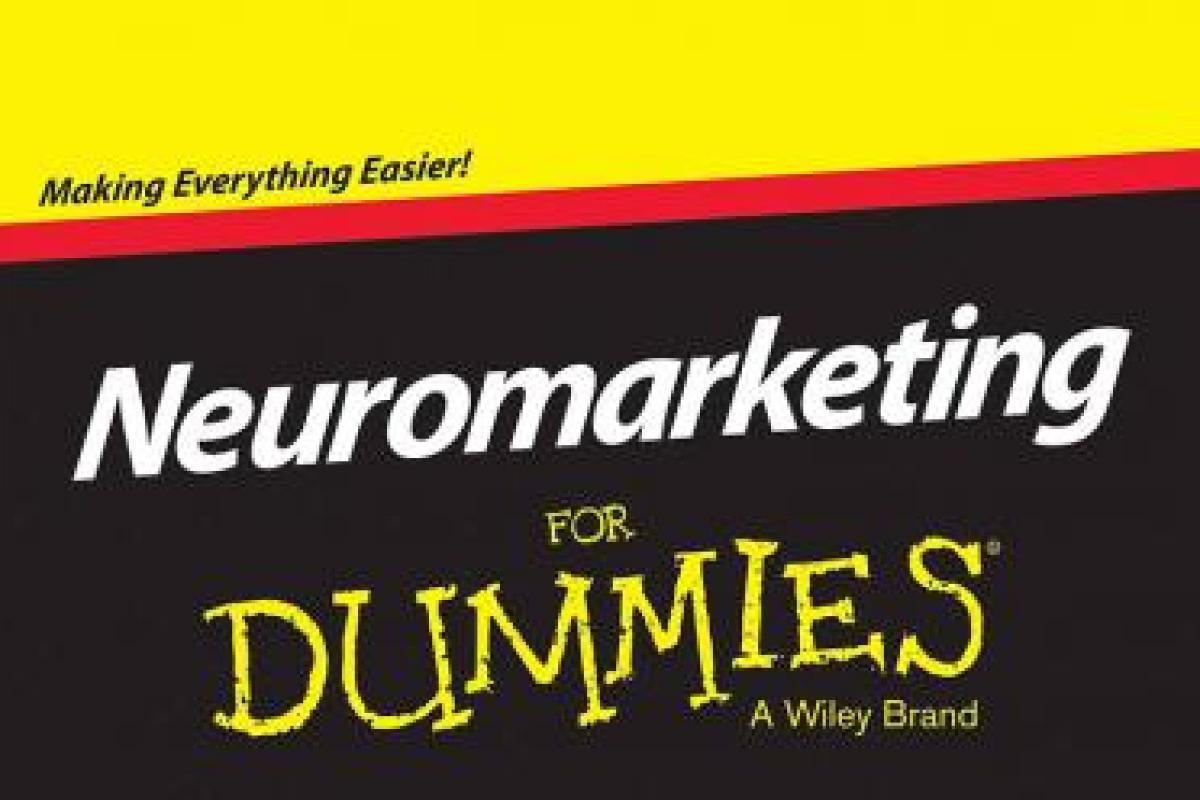The first thing that happened when I sat down to read Neuromarketing for Dummies was a flashback to the early 1980s when I was a fresh-faced graduate in Unilever, proud of my thesis on emotion and electrodermal activity. One day, I tried to talk to my manager about Zajonc’s research on 'preferences without cognition' and the implications for consumer research.
'We shouldn’t ask consumers why they like or dislike things.' I said 'They don’t know and there is a whole body of psychological research to demonstrate that feelings happen before rational thought'. He looked puzzled and sent me off to become familiar with the ample collection of RBL studies demonstrating the relationship between survey data and brand success.
The truth is that I didn’t have the experience and neither of us had the right concepts and language to debate the question well. Neuromarketing for Dummies is proof of how far we’ve all come since then.
The three authors* all have considerable experience in applying insights from neuromarketing commercially as well as being immersed in research and they have delivered the content with the accessible language and style that is a hallmark of the ‘for Dummies’ brand.
Following a brief overview, the book tackles the intuitive vs. rational model of consumers and the limitations of verbal self-reports. (This is the chapter I need to time travel back to myself in Unilever!)
A brisk run through neuromarketing applied to products, packaging, marketing (in-store and online) and entertainment, includes many examples from well-known brands. There is a welcome emphasis on the power of brand over product, including the famous example of the same wine tasting much better from a prestige-branded bottle than a budget-branded bottle.
A tour of technologies and methodologies for measuring consumer response covers both simple and complex techniques and includes guidance on selecting research partners. The section on experimental design and discussion of validity and reliability is a model of clarity. Finally, a review of ethical and legal considerations includes a defence of neuromarketing.
One omission: alongside the discussion of focus group limitations, I would have liked to see the inclusion of analytical tools such as Archetypes, Semiotics and Discourse Analysis as alternative ways to explore consumer responses.
Many of us will appreciate the numerous practical guidelines, tips and checklists for marketers working with limited resources who can’t engage expensive brain imaging studies. The ideas for behavioural studies and simple response time measurements took me back full circle to early experiments in the psychology of emotion.
I am convinced that, if Jung were alive today, he’d still be running his reaction time experiments but he’d have access to better technology and might even be reading Neuromarketing for Dummies.
Sandra Pickering is founding partner of opento a brand consultancy specialising in practical applications of neuromarketing and consumer science. *Disclosure: we partner with Dr. Peter Steidl to apply his insights in our own consulting offer.
Join our Book Club. If you're a member of The Marketing Society we'd love you to write a 300-word review for our Clubhouse. Or if you're an author get in touch. We've got lots of members who'd be keen to review your book.
Contact Michael Piggott to find out more.
